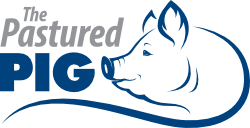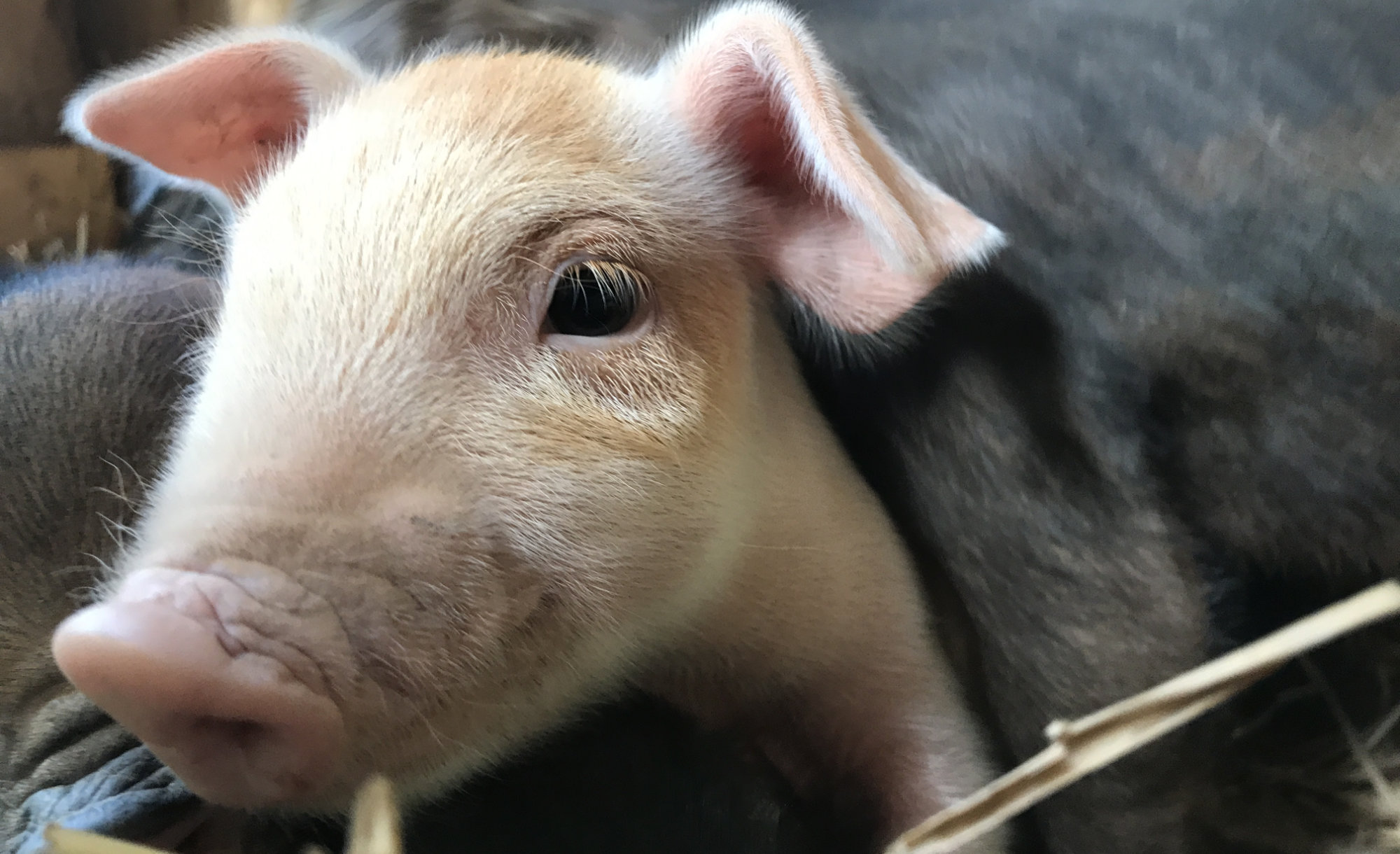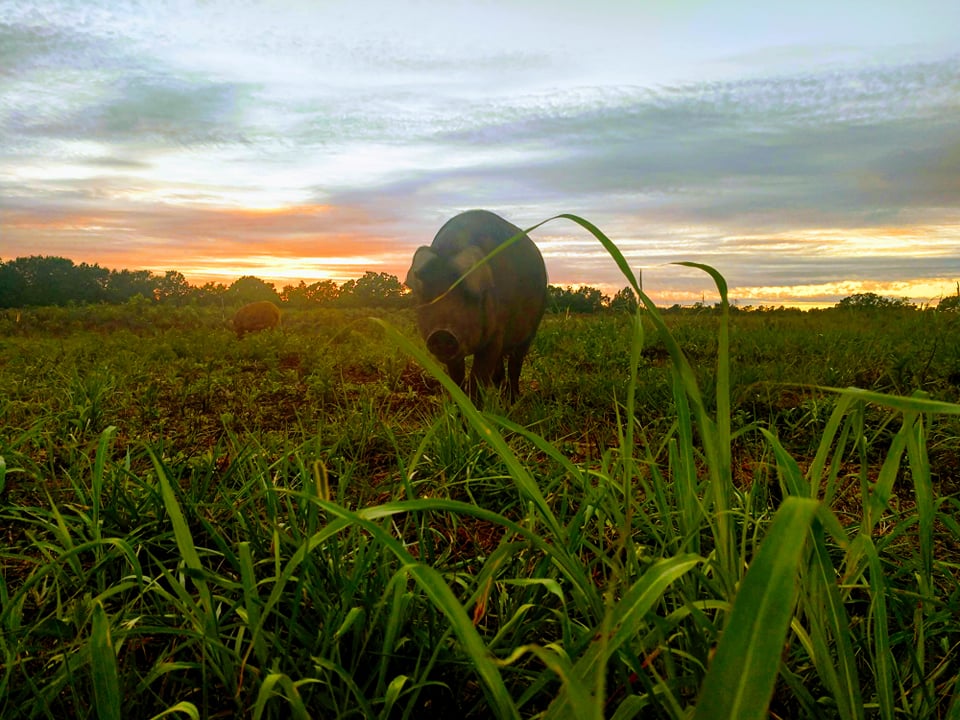For most pastured pork producers, feed costs are the single greatest expense. Reducing these costs can save a lot of money. Many producers turn to “free” alternative feeds, but many of these feeds aren’t free and may not be worth feeding. Let’s look at how we can understand some basics of swine nutrition to more effectively evaluate the quality of alternative feeds.
Before discussing alternative feeds, it’s essential to understand some basic principles of swinenutrition. Most people focus on the protein content of pig feed, usually around 16 percent. However, just as important as the protein content is the amino acid profile of that protein. Proteins are made up of essential amino acids, each playing different roles in the body. For pigs, the most crucial amino acid is lysine, responsible for muscle growth and development. Pigs grow rapidly and need high levels of lysine to support this growth. While pigs are naturally omnivores, they are often fed vegetarian diets for disease prevention. Unfortunately, most lysine-rich food sources are animal-based, such as meat, eggs, and dairy. Plant-based feeds often lack sufficient lysine.
Pigs need about 20 grams of lysine to gain one kilogram of weight. With a typical feedconversion ratio of three pounds of feed to one pound of weight gain, they need three kilograms of feed to produce one kilogram of weight. Of that three kilograms of feed, 20 grams must be lysine. For a 16% protein feed, 480 grams out of that three kilograms must be protein, and of that, 20 grams must be lysine.
Let’s take a look at how we might evaluate the feed value for pigs using red clover and buckwheat as an example. The data is take from feedipedia.org.
- Red clover: 19.7% protein, 3.8% lysine as a percentage of protein.
- In 3,000 grams of red clover, there are 591 grams of protein, providing 22.46
grams of lysine.
- In 3,000 grams of red clover, there are 591 grams of protein, providing 22.46
- Buckwheat forage: 14.1% protein, 5.8% lysine as a percentage of protein.
- In 3,000 grams of buckwheat forage, there are 423 grams of protein, providing
24.53 grams of lysine.
- In 3,000 grams of buckwheat forage, there are 423 grams of protein, providing
Even though buckwheat forage has lower protein, it has more lysine than red clover and pigs love it. But we can’t just feed 3kg of red clover because the measurements are based on the dry matter of the feed.
Red clover is 19% dry matter and 81% water, while buckwheat is 15.9% dry matter and 84.1% water. To get 3 kilograms of dry feed, you need 15.7 kilograms of red clover and 18.8 kilograms of buckwheat for the pigs to gain 1 kg (based off of a feed conversion rate of 3:1). We can use this process to determine the value of alternative feeds as well.
Imagine you’re offered 5 tons of pumpkins for $100 hauling cost. Fresh pumpkin fruits are 7.6% dry matter. Out of 10,000 pounds, you have 760 pounds of dry matter, equivalent to $152 in feed value (based on my $400 per ton feed costs). But it's not nutritionally balanced. Is it worth
hauling 9,240 pounds of extra weight to save $52 for an unbalanced swine feed?
Spent Brewers grains are often available for free. Their DM content is usually 20-30%, and protein is high at 23-29%. However, lysine content is less than 1.4%. The quality of the protein is incredibly low for pigs. Without a source of higher lysine, the pigs will just excrete the protein
(nitrogen).
As best as I can determine, acorns are 5-8% protein, with lysine levels of 2.8%. Hickory and beech nuts both have more lysine and protein than acorns. Dairy has high lysine and protein but is only 8-12% dry matter. These feeds are heavy to haul and may not be nutritionally balanced, affecting the quality of your pork. The biggest value in dairy, however, is that its an optimal protein source for weaning pigs. Pigs under 45 pounds don’t process the protein in soybean meal effectively.
The most cost effective way I have found to supplement our feed costs is by growing our own feed for the pigs. The most nutritious crops include buckwheat, clovers, alfalfa, cowpeas, winter peas, mung beans, hairy vetch, chicory, curly dock, Boston plantain. There are other amino acids essential for pig growth, but I have found that if there are really diverse, nutritious feed sources with a focus on lysine content, the other amino acids are usually present.
Also, there’s a dearth of amino acid profiles of various forages, like brassicas. However, because it is an unaltered higher protein feed (compared to brewers grains), it appears that the lysine content is relatively high because the protein content is high.
Walter Jefferies has loads of information on his website about the crops he grows in Vermont. I have a lot of information on my youtube channel for crops that perform well in Mississippi in both winter and summer.
While free feeds might seem like a great way to save money, they often come with hidden costs and nutritional deficiencies. By understanding swine nutrition and focusing on diverse, high-quality forages, you can improve the health and growth of your pigs while potentially saving money.




